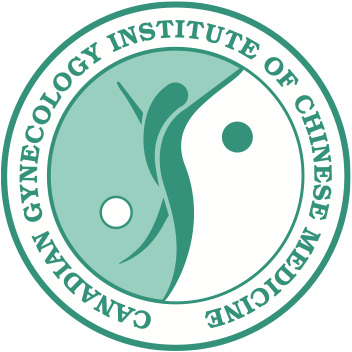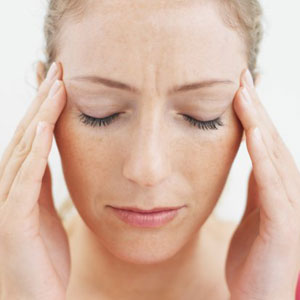Yin Tang & Tai Yang are probably the best known acupuncture points. The other points that we covered are probably better known to practitioners, though Tai Yang and Yin Tang are points that people naturally press and massage when under stress or if they have headaches – just because of their instant relief and calming effect.
Tai Yang
What’s in a Name?
Tai Yang is translated into ‘Greater Yang,’ ‘Greater Sun,’ or just ‘Sun.’
Where is It?
In the depression beside – or lateral to the eyes. Generally, for this part I just do a Google Image search for the name or number and channel of the point. In this case, nothing came up! So instead a did a Google Image search for “headache” and lo-and-behold, the majority of the images from the first 13 pages showed all kinds of people rubbing this point!
Acupressure
Press, rub and knead this point. It is most often used for temporal headaches, one sided headaches, wry mouth, clenched and painful jaw, redness, swelling, blurring or pain of the eyes, dizziness, ringing in the ears, or facial paralysis
For Those Who Wish To Know More
Tai Yang is an extra point and is therefore not associated with a specific channel or meridian. It is known to subdue Liver Yang and brighten the eyes and therefore treat the above conditions.
Anatomical Cross-Sectional View
- Skin: the branches from the zygomatic nerve containing fibers from the maxillary division of the trigeminal nerve (CN V) innervate the skin
- Subcutaneous Tissue: includes the previously described skin nerve and branches along with the superficial temporal artery and vein. The superficial temporal artery is a terminal branch of the external carotid artery. The superficial temporal vein, together with the superficial temporal artery joins the retromandibular vein
- Obicularis Oculi Muscle: the oval shaped flat muscle encircling the eye. The temporal and zygomatic branches containing fibers from the facial merve (CNVII) innervate the muscle
- Temporal Fascia: a strong and thick fascia, which covers the temporal muscle
- Temporal Muscle: covered with the strong temporal fascia and adipose tissue. The branches from the deep temporal nerve containing fibers from the mandibular division of the trigeminal nerve innervate the muscle.
Needling:
- Perpendicular 0.5-1c
- Horizontally, Posteriorally 1-2 cun for migraine
- Horizontally, Downwards towards ST 6 for facial palsy
Yin Tang
What’s in a Name?
Yin Tang is translated into ‘Hall of Impression.’ There are not many explanations of this point, but it is in the area of what many cultures deem the third eye. In clinic, we often talk about this point as the ‘off switch’ because it has such a calming effect on the entire body.
Where is It?
This point is directly in the center of the forehead, between the two eyebrows.

Acupressure
By pressing, pushing, kneading that point, you can treat headaches, heavy sensation in the head, nose bleeding, nasal congestion, and insomnia.
For Those Who Wish To Know More
Like Tai Yang, Yin Tang is also an extra point, not associated with any channel or meridian, though it does run in line with the Du meridian. It is at the location of the third eye, and even the name indicates that it can help to open the mind.
Its actions are to extinguish wind, calm the mind and benefit the nose. It can thus be used in cases of epilepsy, vertigo, convulsion, anxiety, insomnia, fright, nasal congestion, nasal discharge and sneezing.
Anatomical Cross-Sectional View
- Skin: the branches from the supratrochlear nerve containing fibers from the ophpthalamic division of the trigeminal nerve innervate the skin
- Subcutaneous Tissue: includes the previously described skin nerve branches, and the supratrochlear artery and vein. The supratrochlear artery, together with the supratrochlear vein is a terminal branch of the ophthalamic artery
- Procerus Muscle: the procerus muscle is part of the frontal muscle. The temporal branches containing fibers from the facial nerve (CNVII) innervate the muscle
- deep needling reaches the nasal bone
- WARNING: do not use lateral inferior deep insertion or lifting and thrusting as this may damage the eyeballs
References:
Chen, Eachou (1995). Cross-Sectional Anatomy of Acupoints. Churchill-Livingstone,London.
Deadman, P, Al-Khafaji, M & Baker, K (2007). A Manual of Acupuncture. Journal of Chinese Medicine Publications.East Sussex,England.
Ding, Yidan (2008). Acupuncture 6 Class Notes. TorontoSchoolof Traditional Chinese Medicine. Toronto,Canada.
Juliano, Kevin (2011). Tuina Class Notes. TorontoSchoolof Traditional Chinese Medicine. Toronto,Canada.
Maciocia, Giovanni (2005). The Foundations of Chinese Medicine: A Comprehensive Text for Acupuncturists and Herbalists. Churchill-Livingstone,London,England.

